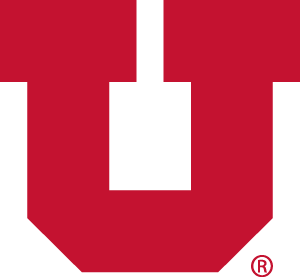The University of Utah is pleased to announce the recipients of the inaugural Innovation Awards. These awards recognize the incredible researchers at the U who are working to translate their research into technologies that benefit the public.
The recipients will be acknowledged on Oct. 2 along with those who accomplished the following in fiscal year 2023: were issued a patent, completed Ascender Grant milestones, completed the first and second phases of the I-Corps program, received SBIR/STTR funding, and formed a National Academy of Inventors chapter.
Excellence in Innovation Undergraduate Student – James Walker
James Walker is a second-year undergraduate in the Department of Mechanical Engineering. He joined Pania Newell’s Integrated Multi-Physics lab in the spring of 2023 and received an Undergraduate Research Opportunities Program (award) over the summer to investigate the effect of Representative Volume Element size, fiber cross-sectional shape, and fiber diameter on the overall mechanical properties of fibrous porous materials. Newell said on top of his intelligence and dedication, it’s his “drive, hard work, critical thinking skills, attentiveness as a listener, quick learning ability, and openness to constructive feedback that truly set him apart.”
Excellence in Innovation Graduate Student – Jack Silcox
Jack Silcox came to the U in 2018 to study Cognition and Neural Sciences in the Department of Psychology. He has since received both his M.S. and Ph.D. degrees, while demonstrating his dedication to not just his research, but also the importance of advancing cutting edge technologies out of the lab. His thesis project examined the cognitive and neural bases of listening effort in speech comprehension, and his findings contribute to both the understanding of language processing and the assessment and treatment of age-related hearing loss. “Not only does he illustrate great qualities as a basic and applied researcher—organized, independent, and very nimble in his work on complex topics—he is also a very deep and critical thinker and has demonstrated an impressive set of skills that I believe are indicative of his potential to continued success as a translational scientist,” said Silcox’s advisor Brennan Payne, associate professor of cognition and neural science.
Investigator on the Rise – Mei Yee Koh
The goal of Mei Yee Koh’s research is to identify mechanisms by which tumor hypoxia and the hypoxia-inducible factors, HIF-1 and HIF-2, drive outcomes that promote cancer progression and resistance to therapy and to develop therapeutic approaches to address these issues. Koh, a pharmacology and toxicology assistant professor and full investigator at Huntsman Cancer Institute, is also the CEO of Kuda Therapeutics, a pre-clinical drug development company she co-founded that is focused on novel therapies to target kidney cancer. “It is clear that, even in an early stage of her career as an independent investigator, Dr. Koh has already demonstrated an impressive ability to delineate novel pathways, identify novel drug targets, and screen for selective inhibitors for translational studies as potential therapeutics,” said Huntsman Cancer Institute Chief Academic Officer Brad Cairns. “This trajectory of success is even more exceptional when put together with her entrepreneurial dedication.”
Advancement of EDI in Research – Keke Fairfax
Keke Fairfax—associate professor and director of equity, diversity, and inclusion for the Department of Pathology—has mentored numerous individual students, while also effecting change at the organizational level. In her department, she leads small group sessions with faculty members to discuss DEI topics. Fairfax has also taken initiative to. She is the co-director of multiple programs that address the lack of diversity in research by mentoring students from underrepresented groups along the path from undergraduate to doctoral training in STEM, including IM-PREP, BRIDGE-UP HBCU and PISCES. Fairfax studies the complex interplay between B, T, and stromal cells; maternal infections; schistosomiasis. "Dr. Fairfax is incredibly deserving of this award," said Allison Carey, an assistant professor of clinical pathology. "She has made numerous programmatic contributions to advancing diversity, equity and inclusion in research here at the U, with a commitment that goes above and beyond. Moreover, she is a role model and mentor for under-represented individuals in STEM at the U and beyond.”
Innovator of the Year – Jacob George
Jacob George works at the intersection of artificial intelligence, robotics and neuroscience. George is a professor in the electrical & computer engineering and physical medicine & rehabilitation departments and directs the Utah NeuroRobotics Lab where he and his lab are developing biologically inspired artificial intelligence and brain-machine interfaces to restore and/or enhance human function. George has developed technology which has been licensed by a U startup, and the resultant product will allow patients to regain their independence to improve their quality of life. George's lab continues to develop technologies which will allow patients to fully interact with their environment. “Dr. Jacob George is a scientist who brings to reality technologies which were previously only dreamed of in movies,” said PIVOT Associate Director of Commercialization Huy Tran. “He and his team have produced the Luke Arm technology, allowing amputees to control the prosthetic arm with their thoughts. Dr. George continually strives to develop technologies that will improve the quality of life for patients.”
Innovation Impact – Jared Rutter and Kevin Hicks
This year Kevin Hicks, a research instructor in the Department of Biochemistry, and biochemistry professor Jared Rutter, along with their colleagues, published a paper in Science on a game changing innovation: the MIDAS platform. MIDAS (mass spectrometry integrated with equilibrium dialysis for discovery of allostery systematically) not only gave scientists insights into never-before-seen interactions between environmental cues and cell metabolism, but also opens the door for better drug discovery. The potential impact of this innovation is vast with the help of a new startup based off this technology and co-founded by Rutter: Atavistik Bio. “I am not aware of any other invention or discovery of comparable impact that has emerged from the University of Utah in the past year,” said Distinguished Professor and Chair of Biochemistry Wesley Sundquist. “
Breakthrough of the Year – Bone Bolt OIC
The Louis S. Peery, MD Orthopaedic Innovation Center developed the Bone Bolt System, a new system for fixing bone fractures, in July 2023. The development of this breakthrough was led by Wade Fallin, Justin Haller and Colin Gregersen. The FDA granted the Bone Bolt System a 510(k) clearance to sell and market the device in the U.S. This milestone marks the first time that a novel medical device has received an FDA 510(k) clearance in the University of Utah’s history. “This achievement demonstrates the commitment by the Department of Orthopaedics to bring new and innovative solutions to advance the quality of orthopaedic patient care,” said Darrel S. Brodke, chair of the Department of Orthopaedics, in a press release. “It is the dynamic collaboration between our clinical faculty, trainees, our discovery research group and our innovation research group, known as the OIC, that led to this advancement, a first of many to come.”
Lifetime Achievement – Gregory Hageman
Gregory S. Hageman, executive director of the John A. Moran Eye Center’s Sharon Eccles Steele Center for Translational Medicine and the John A. Moran Professor Endowed Chair of Ophthalmology and Visual Sciences, has studied age-related macular degeneration for over 30 years and has led the field in both understanding the disease and developing clinical treatments for it. Throughout his career, Hageman has published 155 peer-reviewed journal articles, briefed Congress three times, presented numerous plenaries and named lectureships, and more. “Dr. Hageman is, in short, one of but a few Ph.D. scientists whose understanding of clinical disease is simply transcendent. Dr. Hageman is committed both to the science of AMD and to the patients and family members affected by this tragic disease,” said Randall J Olson, John A. Moran Eye Center CEO and Department of Ophthalmology and Visual Sciences chair and professor. “His career has been characterized by his willingness to take the initiative and to commit the time and labor-intensive work necessary to meaningfully advance our understanding of AMD while teaching, training and mentoring others along the way.”



